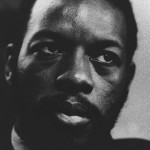 I try to play a musical idea that is not being influenced by any previous thing I have played before […] The theme that you play at the start of the number is the territory, and what comes after, which may have very little to do with it, is the adventure. (Ornette Coleman, qtd. in Balliett 407).
I try to play a musical idea that is not being influenced by any previous thing I have played before […] The theme that you play at the start of the number is the territory, and what comes after, which may have very little to do with it, is the adventure. (Ornette Coleman, qtd. in Balliett 407).
More than the music of any other jazz artist, Ornette Coleman’s gives me the feeling of creation out of nothing. His is an art of relentless unspooling newness, endlessly self-generating. Structures crop up from moment to moment, stretch out, morph into something else, disappear. Melodies without memories, or only the barest traces of them; even when they repeat—because they repeat—each iteration seems unconscious of the last. Each idea asserts its separateness, its uniqueness, preening and beautiful—only to be abandoned, bumped out of the spotlight by the next, the next. They are wrought from nothing, or next to nothing, are next to nothing themselves, and create nothing except, perhaps, a notch, a space, for the idea that follows, just as perfectly ephemeral. Vignettes, they balk at larger wholes; they do not believe such things exist. They hardly believe in each other.
Gunther Schuller once described Coleman’s music as “uncluttered” by convention (qtd. in Williams 216), and it is this lack of clutter one feels in the deepest sense: an abundance of discardable melody, fostered but never owned; a principle of dispossession, or perhaps unpossession. Hence the other adjectives often associated with Coleman: pure, liberated, egalitarian, transparent, Zenlike.
*
In the literature on Coleman, one finds an interesting counter-tendency to the above: a desire to find some hidden coherence in the apparent unruliness, to assign him to one or another tradition, folk or elite. Trumpeter John Snyder, for example: Coleman’s music, “which is supposed to be so free, is closely organized” (qtd. in Balliett 405). Or Gary Giddins, who commends “the specificity with which [Coleman’s] improvisations elaborate his compositions … the solo eventually works through every facet of the theme, modifying colors and tempos and dynamics” (470-1). Ted Gioia roots Coleman in bebop, standard harmony, modal improvisation, and 32-bar structure (43). And Schuller himself lauds Coleman’s intuitive sense of structure: he “is fully aware of his place in the overall formal design at any given moment” (“Compositions” 83).
Of course, Coleman’s earliest boosters (like Schuller and Martin Williams) had to find a way to defend him against the vitriol that greeted his emergence. Though Gioia’s writing is from a time well after Coleman’s canonization, his goal is not so different: to rescue Coleman—and with him, all of jazz—from the debilitating myth of the primitive.α And Giddins, arguing for the lasting importance of Coleman’s Atlantic recordings, reminds us that “musical patterns will assert themselves no matter how unbridled the situation” (471). It is a point Coleman himself has echoed, though in a typically ex post facto way: “From realizing that I can make mistakes, I have come to realize there is an order in what I do” (qtd. in Williams 213).
For the sympathetic critic, what sounds like madness must be revealed as method—a method different from what had been heard up to that point, true, but method nonetheless. Regardless of whether Coleman is intuitive genius or harmolodic intellectual, regardless of whether his work is a neurotic symptom or the product of a conscious intention, close listening and careful analysis will reveal precedent, coherence, logic, unity.β
Asserting that Coleman’s solos are closely tied to his themes, or that he always knows just where he is, denies him—and us—the pleasure of getting lost. Considered in terms of the epigraph I’ve chosen for this post—Coleman’s binary between territory and adventure—it might be said that the job of the critic—with music as with any art—is to show how the adventure arises from, and is subservient to, the territory. This desire to tranquilize Coleman and drag him back to the territory—to assert that, after all, there is no adventure, or only very little, and that tightly circumscribed—is perhaps the best proof that he was, maybe even is, a dangerous artist. For to admit the existence of the adventure is to scandalize the critic: to undermine some of his most cherished myths, and as such, the role of criticism in relation to art and the artist; to force us to find some other way to speak the adventure without making of it the territory.
*
For my money, Ekkehard Jost has come the closest to synthesizing these opposing tendencies of freedom and constraint, to respecting the autonomy of the adventure without entirely severing it from the territory. In his 1974 book Free Jazz, he coined the term “motivic chain-association” to describe the stream-of-consciousness movement of a typical Coleman solo: “one idea grows from another, is reformulated, and leads to yet another new idea” (48). Schuller had come to a similar conclusion some years earlier. But notice how Schuller works to recuperate this idea in the name of wholeness: “Short motives tried in different ways … [act as a] motivic springboard for a new and contrasting idea … only to yield yet another link in the chain of musical thought, until the entire statement has been made” (Ornette!; my emphasis). Jost resists this impulse, highlighting instead the unfinishedness and non-teleology of Coleman’s soloing; it is precisely each idea’s lack of conclusion that allows it to serve as a link to the next—a feature of Coleman’s playing that Jost nicely metaphorizes as a dash instead of an exclamation mark.γ
This “cohesion,” such as it is, is purely horizontal, formed moment to moment; each footstep along the adventure takes us—potentially—further from the territory. Coleman, it might be said, doesn’t know the woods or quite where he is … but he has left himself a trail of breadcrumbs, and has even brought along a compass, or two; sometimes he even crosses over his own trail, but that doesn’t mean he’ll follow it back.
As the distance between territory and adventure increases, the connections between the two become ever-more tenuous; and the critic, ambivalent about what has been set in motion, must suggest ever-more-tenuous links between the two. Balliett, for example, lists scales, rhythmic clusters, pitch areas, and mood (406). Then he throws up his hands: Coleman’s solos “move melodically with such freedom and originality and surprise that they form an independent music” (407). In another representative ambivalence, Jost asserts emotional unity between theme and solo, territory and adventure … and then goes on to note that Coleman’s compositions are characterized by emotional ambiguity (58). The “thematic framework” is “non-obligatory” (Jost 57)—meaning Coleman can do whatever the hell he likes … and generally does. Making a garden of these woods, it seems, will be more difficult than anyone had anticipated.
Coleman’s “unclutteredness” extends well beyond his freedom from the vertical demands of harmony (the sort which, to use Williams’s memorable analogy, turns the soloist into a “rat in the harmonic maze” (213)), or the relationship (or lack thereof) between theme and solo, or the syntax of the solos themselves. Take, for example, his compositions, which, like his melodies, he “has a tendency to abandon” (Giddins 470). If composition does not dominate improvisation, is brother rather than father, then why should “standards,” personal or historical, dominate a career? Why should any theme command more attention than the time it takes to be played? True to form, Coleman’s compositions are often as whimsical and bizarrely un-cadenced as his solos.
Then there is the matter of temperament. Pitch, as Jost emphasizes, is subjective, and more important, historically and culturally relative.δ To extend Coleman’s analogy: the tempered scale, the tempered ear, the tempered man, are just other figures for the territory; the adventure is the place where the notes squeal and waggle and bend out of their culturally-sanctioned frequencies, get lost in the wild blue spaces between. As for rhythm, Schuller and other have called attention to the absence of a clear downbeat, the absence of clear bar lines supposed to guide us like regularly-spaced blazes on trees (Giddins’s “willy-nilly toe tapping”). And so the adventure is not just out there, not just the ever-extending line of the solo away from the theme, the composition away from the standard, but in the interstices of the every facet of the music.
Spend long enough with Coleman, and the territory disappears: it all starts to sound like adventure.
*
The horizontality of Coleman’s approach to improvisation, composition, and the relationship between the two, and to the jazz tradition, manifests itself in another interesting way: a flattening of the aural space, troubling (if never quite eradicating) the hierarchy between solo and accompaniment, lead and rhythm. As with any of the above, it is possible to overstate the case; just as Coleman can choose to be more or less thematic in his solos—and they run the gamut from enamored to indifferent—and just as he can choose whether to solo at all, so some tunes and recordings fit more squarely into the traditional hierarchies of small-group jazz recording than others. (The very fact that it is Coleman who is the subject of this post suggests the limits of this argument.) As Williams and others have noted, the ensemble of Coleman, Cherry, Haden and Blackwell (or Higgins), and later Izenzon and Moffat, moved the music in a more purely collaborative direction, although some of the old hierarchical markers remain (e.g., pitch ranges, dynamic levels, tune organization). The double ensemble recording Free Jazz is widely regarded as the ne plus ultra of collaborative music-making: here, all of the musicians are listening and responding to each other, complementing and contrasting with each other, “soloing” together—hence Williams’s well-known comparison to abstract painting.
And yet, saying that something has no background is no different from saying it is all background, or as easily background as foreground. Each term loses its meaning without the other; it depends on where you are sitting, where you position your ear in relation to the music … and perhaps, where the music positions itself in relation to you. And here is where I would quibble with Giddins—though it is a quibble that gets to the heart of my own perception of Coleman. Far from “mak[ing] terrible background music” or “commanding full attention” (Giddins 469), Coleman makes music that is just as lovely in the background as in the foreground. Often, I cannot tell which—how far away I am sitting. The “immense pleasure” Giddins cites comes at no “price,” for Coleman does not finally demand anything of us. It is part of the non-hierarchical nature of this music that it does not place such demands; for the musician-listener hierarchy must fall, or at least be troubled, with the rest of them, in order to for Coleman’s revolution to achieve its ultimate aim. The fact that I can listen to Coleman or not listen to Coleman; that I can soak in Coleman as in a warm bath as easily as ignore him, knowing that, when I start listening again, he will be there—the same there, a different there—because I am as good in this place as I would have been thirty seconds earlier, or later—that I don’t feel like I “missed” something—that I can start the record over again, and often do—is the “immense pleasure” of his music. Paradoxically, despite this music’s relentless forward drive, the combination of lack of teleology, freedom of movement, and near-total absence of benchmarks creates a feeling of stasis, like the water in a wave, which only appears to move forward, when what we are really witnessing is a transfer of energy. A sense of timelessness and there-ness—what Santoro calls Zen; perhaps what Jost calls relaxation, the balance of an achieved simplicity.
Oh, don’t get me wrong, I’ve used Giddins’s line on Coleman plenty of times. To call something background music is to relegate it to the dentist’s office and the supermarket aisle. Except it’s one thing to reward close attention and another to solicit it. That Coleman does the former without the latter is, I think, the nature of his genius.
Just think what a supermarket it would be, anyway. I would spend hours and hours wandering up and down the aisles, and then come to the register with only a few items in my cart. Instead of purchasing them, I would throw them on the floor. There would be no express line.
*
Is it scandalous to suggest that the pleasure of listening to Ornette Coleman derives as much from not listening, from dipping in and out, skidding along the surface, from distraction as much as concentration, or from the oscillation between the two? In The Pleasure of the Text, exploring what Richard Howard calls “an erotics of reading” (viii; emphasis in original), Roland Barthes made a similarly scandalous case for the pleasure of reading—and not reading—classic novels. “A rhythm is established,” Barthes writes: “casual, unconcerned with the integrity of the text: our very avidity for knowledge impels us to skip or skim certain passages (anticipated as ‘boring’) in order to get more quickly to the warmer parts of the anecdote […] we boldly skip (no one is watching) descriptions, explanations, analyses, conversations; doing so, we resemble a spectator in a nightclub who climbs onto the stage and speeds up the dancer’s striptease, tearing off her clothing, but in the same order, that is: on the one hand respecting and on the other hastening the episodes of the ritual (like a priest gulping down his Mass). […] The author cannot predict tmesis; he cannot choose to write what will not be read. And yet, it is the very rhythm of what is read and what is not read that creates the pleasure of the great narratives: has anyone ever read Proust, Balzac, War and Peace, word for word? (Proust’s good fortune: from one reading to the next, we never skip the same passages). […] Thus, what I enjoy in a narrative is not directly its content or even its structure, but rather the abrasions I impose upon the fine surface: I read on, I look up, I skip, I dip in again” (10-11; emphases in original).
There may be something perverse about suggesting a Balzacian pleasure in listening to avant garde saxophone. With the classic novel, the edges—always the source of pleasure in Barthes—arise out of the conscious parsing of useless from useful; the text takes on a granulated surface whose “abrasion” gives us pleasure. With Coleman, such a distinction is meaningless; since the solos do not build toward a revelation or climax, since every idea is as useless or useful as every other, we don’t “gulp down” Coleman to get closer to some anticipated end. My distraction is not calculated; my body—which, as Barthes coyly notes, “pursues its own ideas” (17)—makes its own distinctions. And yet, the pleasureful friction created by this “rhythm” of listening/ not-listening is identical.
In other ways, listening to Coleman is more reminiscent of Barthes’s description of reading the text of bliss: one “grazes” “aristocratically” rather than skipping ahead. We can listen to Coleman in either direction, in pieces, here and there, without having to observe ritual. (The libertine listener escapes them; there may be as much pleasure in flaunting once-culturally-sanctioned listening practices—unidirectional, undistracted, complete—as in observing them.) Whether Coleman’s music can be equated to the “lacerating of language” Barthes attributes to the text of bliss is another matter. It strikes me that Coleman’s solos and compositions, like Barthes’s modern texts, are doubled: “dismantled” yet still readable; the sort of text that puts the listener between comfort and crisis (Barthes’s terms). It would help explain the ambivalence in the writing about him. Regardless, is there not also a rhythm—halting, measureless—to the way we encounter the text of bliss?ε
One of the pleasures of reading The Pleasure of the Text—a text with its own peculiar rhythm, riddled with tantalizing gaps and ruptures—is the way the pleasure-bliss binary is itself confused, dismantled, re-erected, and dissolved over the course of Barthes’s performance. In fact, one gets a good sense of this troubled boundary in the passage quoted, from the clear indication that one re-reads classical narratives. I suppose that, like the gentleman who jumps onstage to hurry the striptease, there is no reason not to watch the same thing night after night: the end may be known, but its revelation, as well as (once again) his participation—even more, his sudden assertion of agency—is pleasurable. At the same time, the source of pleasure for Barthes is never revelation. There must be a pleasure in re-reading that is distinct from (though never entirely separate from) ends; if one reads passages one had skipped the last time, clearly the use-value of what is read shifts on each reading, and can be only tangentially related to “finding out what happens.” Given the sort of listening Coleman provokes in me, there is a similar pleasure in re-listening: I hear the passages I “missed” (“heard,” but with half an ear; let slip by; forgot as soon as I heard them), skip others that I heard before. Ironically, our ability to listen recursively to this most spontaneous of musicians reminds us that listening itself is improvisatory: spontaneous, different from one act and the next. What Coleman calls our attention to is this un-finishedness of all listening.
*
The word “scandal,” repeated throughout this post; the idea that Coleman “frees” us from certain culturally-sanctioned behaviors: I have been writing around another element of listening to Coleman that I think gets at the heart of the pleasure—one pleasure—of listening to his music. It appears in the Barthes passage as the parenthetical “no one is looking.” For the implication of having to say as much—and to say it in parentheses—is that someone is looking. We feel guilty about skipping passages, at least in canonical works of literature. The whole of Western culture is reading over our shoulders; it must be, for it is what has given us the tools to decode the text.
A better musical analogy to War and Peace would be a Brahms symphony: expansive, dramatic, with a clear narrative thrust and clear peaks and troughs, “important” and “unimportant” parts. It’s during the latter that we reach for the cough drop. We can—we do—fall in and out of an hour-long symphony. Yet, there is the expectation of immersion. If, as Milan Kundera pejoratively concluded (in Immortality), the Romantics “raised feeling to the level of a value,” then when we fail to fully immerse ourselves, fail to feel, we feel guilty. Clearly, the failure cannot be Brahms’s (he listens over our shoulder); it must be our own. Sustained attention is the pledge we make; catharsis is the reward if and only if we give ourselves away to the musical godhead. The Romantic symphony makes terrible background music. It must have all of our attention or none of it.
Now that jazz has become “America’s classical music,” it’s easy to treat, say, a solo by Keith Jarrett like a Brahms symphony.ζ The wonder of Coleman is that, even as his work has entered the jazz canon, its every element resists the cult of guilt. It is what Giddins hears, I think, when he writes that Coleman’s solos “incarnate an eternal innocence” (469). In this sense, the territory is more than the musical strictures of convention and tradition; it is the whole past. When Coleman solos, every previous melodic fragment becomes the territory; the adventure is that state of continuous becoming that characterizes his improvising.
In a word, I don’t need to feel responsible to Coleman’s music, and he does not need to feel responsible to me. The ultimate freedom of Ornette Coleman is to write music that frees itself from the tyranny of the listener and frees the listener from the tyranny of the music. Didn’t you feel it as soon as the piano was jettisoned, that weightiest of instruments, and with it its geometrically-ordered harmony, leaving Coleman and us to float together? To be ex nihilo is above all to be guilt-free. A perfectly American music and musician, then, performing on the blank slate of an always-evolving present. How can he have committed parricide when he has managed to convince me that he has no father at all?
α I don’t want to be misunderstood as making a bid for Coleman as the intuitive, unconscious genius without a past, or for an art that is entirely without structure. The title of this post, which I settled on a year or so ago when I first thought to write about the way Coleman’s playing makes me feel, has an unhappy correspondence with the “primitivist myth” that greeted Coleman’s arrival; i.e., the pervasive idea that Coleman came out of nowhere, entirely untutored, with a simple, “natural” feel for the music (cf. Gioia, “Jazz and the Primitivist Myth”). Several of Coleman’s early supporters drew on this myth (e.g., Coleman was “spared a conventional music education”; his compositions are “intuitive creations whose genuineness is for this reason alone unassailable” (Schuller, “Coleman,” 80, 82)), as did Coleman himself, perhaps recognizing the myth’s potential (e.g., “I was so in tune to music that I picked it up as soon as I assembled it [the horn] and played the same thing I’m playing today—only I didn’t know music. I was just hearing music” (qtd. in Santoro 93)). (N.B.: the language of the epigraph I have chosen for this post does not sound like self-mythologizing to me; it is too tentative, too qualified: “I try”; “may have very little to do.”) Coleman also consistently links his playing to emotion and the body, using organic metaphors that tend to discount musical influences in favor of natural, experiential ones … although this, too, has a long history in the annals of artists’ mythmaking. Anyway, in using the term “ex nihilo” I am not referring to Coleman’s musical roots (in bebop, Afro American folk tradition, or what have you) or lack thereof, nor am I denying the activity of the intellect in what Gioia rightly calls “spontaneous composition.” As Jost argues, the “simple” elements of Coleman’s playing (absence of changes, structure, bar lines, etc.) are not an argument for primitivity; rather, Coleman achieves “complexity […] by simple means” (53). And this: “Simplicity does not mean a reduced creative capacity, and has nothing to do with primitivism or banality. It is the expression of an inner balance, a poise, which brings an element of relaxation to even the most hectic musical content” (Jost 64).
β That Coleman happened when he did is particularly interesting considered in jazz historical context. In his seminal essay “Sonny Rollins and the Challenge of Thematic Improvisation,” Gunther Schuller credits Rollins, and particularly the track “Blue 7” on Saxophone Colossus (1957), for bringing a sense of large-scale structure and “unifying force” to the jazz solo: “What Sonny Rollins has added conclusively to the scope of jazz improvisation is the idea of developing and varying a main theme, and not just a secondary motive or phrase which the player happens to hit upon in the course of his improvisation and which in itself is unrelated to the ‘head’ of the composition” (96). That Coleman appears to have arrived at the opposite conclusion at virtually the same moment—how to pry the jazz solo away from a sense of large-scale structure, based on a purely forward imperative and the privileging of melody over harmony—suggests the ideas of the literary critic M.M. Bakhtin.
γ Not to give the impression that Jost completely abandons the idea of harmonic organization: Gioia’s modal “flavor” (which is not the same thing as being modal) is replaced by a tonal center, “an imaginary pedal point” (48), itself sometimes replaced by secondary tonal centers. The regularity of where Coleman moves to secondary tonal centers suggests that he “knows just where he is,” as Schuller puts it, though he has abandoned the hierarchies of blues harmony. Nor do I want to overstate Giddins’s desire to hear deep structure in Coleman; his is rather a typical ambivalence, that edge between admiring the beauty of the adventure and claiming it for the territory.
δ When Coleman appeared on the scene (in L.A.), he was competing with a “sterilized” West Coast/“cool” sound, which certainly would have impacted the way he was heard (Jost 53; Santoro 94). To the contemporary ear, raised among a heterogeneity of timbres and musics, perceptions of pitch may be a little more forgiving. To me, Coleman always just sounded a little raucous, a little squawky, like Perry Farrell with a horn.
ε Coleman’s violin and trumpet playing, beautifully described by Jost (65), are another matter. Perhaps what distinguishes Coleman, to consider another concept out of Barthes, is the particular grain of his “voice.” Grain, more broadly applied, seems like it might be a useful concept for thinking about music—particularly a music like Coleman’s, whose horn has so often been compared to the human voice, and who claimed he wanted to do what words do with his horn—this all with an eye toward Scott Burnham’s call for an approach to music that tries to take account of its materiality. A third point, somewhere off the evocation-analysis axis … perhaps one that occupies the vaunted space of The Real as against the Imaginary (evocation) and Subjecthood (analysis)? If analysis and evocation form a binary, then materiality, the impossible dream of language, dismantles it. Interestingly, timbre is the one aspect of Coleman’s music that is hardly ever mentioned, except insofar as it folds into our perception of pitch. In what ways does it contribute to the “grain,” and to the listening sensation I am trying to explain? Another aspect this post cannot really consider are the vertical aspects of Coleman’s music, i.e., the “serendipitous harmonies” (Giddins) and occasional atonal complexes (Schuller) of particularly Free Jazz’s Dixieland mutations, the dissonant unisons, resting places (but never ends) created by collective, largely unscripted improvisation. In what way is this “vertical din” (Giddins again) related to grain? In what way related to the multilayering (Barthes) of the text of bliss? (Sorry, this is the trash-heap footnote for dumping all half-developed ideas, undeveloped ideas, and ideas-to-be!)
ζ Gioia, who himself invokes Barthes to argue for a pleasure-based approach to listening to jazz, reminds us that it is possible—even probable—that art will bore us: “Let us not neglect the pleasures of the text, but neither let us forget the pleasures of not finishing the text” (131). While I would tend to agree with Gioia’s concerns about the sacralization of jazz, I have a few issues with his argument. First, rather than understanding listening and taste formation as products of culture, Gioia seems to posit a mythological common or naïve listener, one who “knows what he likes,” so to speak. Ironically, even as Gioia rejects the primitive in the jazz musician, he erects the primitive in the audience, and so denies the audience the very things he argued for in the musician: the role of education and the intellect, in this case in hearing and processing music. Second, Gioia ignores the text of bliss—the text that risks everything—or perhaps disparages it, if one is to take his comments about post-Coleman free jazz this way. We can be bored or harried into bliss as much as brought there by excess of pleasure. Finally, Gioia seems to assume that the listening process is closed, rather than open and evolving. As I suggest above, there are many different ways of not “finishing” a text. Gioia’s comments suggest turning off a CD or leaving a concert halfway through because the music has “bored” us. What about coming in halfway through, or starting in the middle? Skipping places, zoning out, coming back, staying for another set of the “same,” putting on the record again? The unfinished text is not necessarily the text of boredom, but rather the grain of a particular pleasure.
ADDENDUM, 1.3.19: From John McDonough’s review of Free Jazz in Down Beat, 1992 (as reported by Robert Walser): “You can’t get any more open-minded or empty-headed than Bill Mathieu, who wrote this about Albert Ayler’s Ghost: ‘To an astonishing degree it commands the suspension of critical judgment and [presents] itself … to the listener on a level above quality, above personal like or dislike. It simply is what it is.’ He gave it five stars and never had the slightest idea why. Free jazz apparently meant freedom from critics as well.”
Citations in the post pertain to the following texts/editions: Balliett, Whitney, “Ornette,” in American Musicians (Oxford, 1986); Giddins, Gary, “Ornette Coleman (This Is Our Music),” in Visions of Jazz (Oxford, 2000); Gioia, Ted, “Jazz and the Primivist Myth” and “Boredom and Jazz,” in The Imperfect Art (Stanford UP, 1988); Jost, Ekkehard, “Ornette Coleman,” in Free Jazz (Da Capo, 1974); Williams, Martin, “Early Ornette” and “Free Jazz,” in Jazz in its Time (Oxford, 1991); Santoro, Gene, “Harmolodic Philosopher,” in Stir It Up (Oxford, 1997); Schuller, Gunther, “Ornette Coleman,” “Ornette Coleman’s Compositions,” and “Sonny Rollins and the Challenge of Thematic Improvisation,” in Musings (Oxford, 1986). The Williams and Schuller books are compilations of earlier writings, some of which are liner notes to Coleman’s early albums, which I also consulted, and which feature other texts by Schuller, Nat Hentoff, Ludvig Rasmusson, and John Litweiler. My discussion of Coleman’s music is shaped by (and limited to) his work as a saxophonist and composer on the following recordings: The Shape of Jazz to Come (Atlantic, 1959); This Is Our Music (Atlantic, 1960); Free Jazz (Atlantic, 1960); Ornette! (Atlantic, 1961); Town Hall, 1962 (ESP, 1965); and Live at the Golden Circle, Volume One (Blue Note, 1965). Personnel on the first four discs include Don Cherry, trumpet; Charlie Haden or Scott LeFaro, bass; and Ed Blackwell or Billy Higgins, drums. On Free Jazz, add Eric Dolphy (sax) and Freddie Hubbard (trumpet). The last two discs feature Coleman with the trio of David Izenzon on bass and Charles Moffat on drums.













 The Sharks are a party band from Austin. They take a page out of Municipal Waste’s book—that I-was-a-shop-burnout/high-school-fuckup persona—although they’re too much a muddle of styles to worry themselves about reviving anything in particular. Actually, their music sounds like The Ramones wearing a metal skirt. Singer/bassist Mike Hardin, a big goofy teddy-bear of a guy, spins cock-and-bull yarns between songs about being the too-old loser living in his mom’s basement, meant to inspire moments of ironic reverie. Guitarist Will Ellis looks like a cross between the father from the original Hills Have Eyes family and Rudolf Schenker: blond, mustachioed, wearing short-shorts, and headbanging to the Scorpions records spinning away in that basement room in his head. He plays an upsidedown Gibson Explorer (at least the neck is), Hardin an upsidedown Fender Jazz—which, I guess, is a comment on how I’m supposed to take the Sharks: not seriously.
The Sharks are a party band from Austin. They take a page out of Municipal Waste’s book—that I-was-a-shop-burnout/high-school-fuckup persona—although they’re too much a muddle of styles to worry themselves about reviving anything in particular. Actually, their music sounds like The Ramones wearing a metal skirt. Singer/bassist Mike Hardin, a big goofy teddy-bear of a guy, spins cock-and-bull yarns between songs about being the too-old loser living in his mom’s basement, meant to inspire moments of ironic reverie. Guitarist Will Ellis looks like a cross between the father from the original Hills Have Eyes family and Rudolf Schenker: blond, mustachioed, wearing short-shorts, and headbanging to the Scorpions records spinning away in that basement room in his head. He plays an upsidedown Gibson Explorer (at least the neck is), Hardin an upsidedown Fender Jazz—which, I guess, is a comment on how I’m supposed to take the Sharks: not seriously. After American Sharks, how can any band, let alone one called Whores, appear as anything but Serious Music? They certainly looked more serious; singer/guitarist Christian Lembach (middle) is damn near clean-cut, in a punkish sort of way. Who knows but that they brought the Sharks along for sheer contrast, although more likely the two got really drunk together after their 2014 SXSW performances. It was certainly a Serious Comment Mr Lembach made partway through their set—unlike the Sharks’ truncated rambles, his were rather softspoken, and I missed a good half of what he said; but I did gather that they were happy to have good-time folks like the Sharks along with them on tour, that they were pleased to be back at Vitus, and that they didn’t sing about dragons and wizards—not that he had a problem with that—to each his own, it takes a rainbow, etc.—just not his scene. I wondered who this comment was directed at, if there was an errant Amon Amarth fan in the crowd looking at a subway map. Anyway, said Serious Comment disposed me to change my attitude, and Listen Seriously.
After American Sharks, how can any band, let alone one called Whores, appear as anything but Serious Music? They certainly looked more serious; singer/guitarist Christian Lembach (middle) is damn near clean-cut, in a punkish sort of way. Who knows but that they brought the Sharks along for sheer contrast, although more likely the two got really drunk together after their 2014 SXSW performances. It was certainly a Serious Comment Mr Lembach made partway through their set—unlike the Sharks’ truncated rambles, his were rather softspoken, and I missed a good half of what he said; but I did gather that they were happy to have good-time folks like the Sharks along with them on tour, that they were pleased to be back at Vitus, and that they didn’t sing about dragons and wizards—not that he had a problem with that—to each his own, it takes a rainbow, etc.—just not his scene. I wondered who this comment was directed at, if there was an errant Amon Amarth fan in the crowd looking at a subway map. Anyway, said Serious Comment disposed me to change my attitude, and Listen Seriously.





